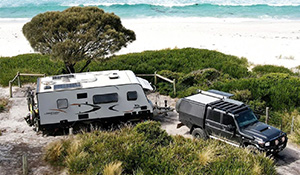INSIGHT – Nissan’s ‘cool’ new paint
Words: via Practical Motoring
Photos: Manufacturer supplied

Nissan is collaborating with Radi-Cool in trialling a new automotive paint that could be a game changer for Aussie cars. This new formulation aims to lower a vehicle’s ambient cabin temperature and reduce the energy usage of the air-conditioning system, making it particularly beneficial for Australia’s scorching summers and EV battery life.

The Heat of Australian Summers
Many parts of Australia average temperatures from 30°C to 40°C, with some regions, like parts of Western Australia, experiencing temperatures that exceed 45°C – albeit there are not many EVs outside major cities.
However, inside a parked car, the situation can become even more intense. On a typical summer day, the cabin temperature of a vehicle can quickly soar to between 60°C and 70°C within minutes, posing significant discomfort and even health risks, particularly for young ones and pets who should not be kept in a parked car.

The Science Behind the Paint
Developed with radiative cooling specialist Radi-Cool, Nissan’s paint incorporates metamaterial – synthetic composite materials with unique properties not naturally found. These materials work together to reflect sunlight and dissipate heat, significantly reducing the temperature of a vehicle’s exterior and interior.

The metamaterial in the paint features two types of microstructure particles. The first type reflects near-infrared rays, which are responsible for generating heat in traditional paint. The second type creates electromagnetic waves that counteract the sun’s rays, redirecting the energy away from the vehicle into the atmosphere. This dual mechanism effectively minimises heat transfer to the vehicle’s surfaces.

Nissan started its 12-month trial at Tokyo International Air Terminal at Haneda, applying the paint to a Nissan NV100 service vehicle. The airport’s large, sun-exposed tarmac provided an ideal testing environment for evaluating the paint’s performance under high-temperature conditions.

Although still in the testing phase, the results have been promising. Vehicles treated with Nissan’s cool paint showed up to a 12-degree Celsius reduction in exterior surface temperatures and up to a 5-degree Celsius cooler interior compared to those with traditional automotive paint. This cooler cabin reduces the air-conditioning load, improving overall vehicle efficiency.

Radiant cooling paint is typically used for buildings and structures, often applied with a roller and devoid of a clear topcoat. To adapt this technology for automotive use, Nissan developed the paint so that iut could be sprayed on, including a clear topcoat. After testing over 100 samples, the paint is currently applied at a thickness of 120 microns, about six times thicker than typical automotive paint, which will add significantly to the car’s weight.

For Australians, Nissan’s cool paint could be a perfect fit, especially during the intense summers. A cooler car interior means less reliance on air conditioning, leading to improved fuel efficiency for traditional vehicles and extended battery life for electric vehicles. This technology holds particular promise for light commercial vehicles like vans and trucks that are constantly exposed to the sun.









